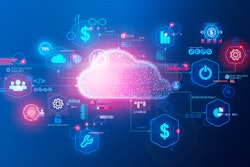
Businesses faced no shortage of disruptions throughout the past year — from the global pandemic to increased extreme weather and historical energy disruptions. Supply chain professionals are no exception.
Even amidst these challenges, companies have continued to work toward major reductions in their carbon footprints. In fact, as the United Nations reported in 2020, commitments to reach net zero emissions by governments and businesses across the globe doubled in less than a year.
The world’s most influential companies are increasingly expecting more from their supply chains in terms of sustainability and climate consciousness. Suppliers must be prepared to meet a higher standard of transparency and climate action to retain their business. Here’s how:
Know the basics
Emissions responsibility is divided into three scopes. Scope 1 refers to the emissions from sources that a business directly owns or controls. Scope 2 refers to emissions associated with energy the business consumes from the grid. Scope 3 involves all other emissions up and down the supply chain, both upstream suppliers and downstream customers. For additional context, Scope 1 and 2 emissions show up in the footprint of buyers/OEM assemblers as Scope 3 emissions.
Understand resource usage and set science-based targets for reducing emissions
The first step to reducing emissions is identifying them. Today’s leaders in emissions transparency are using comprehensive invoice collection programs to gather cost and usage data, accurately and efficiently prepare environmental reports and set environmental targets. As many businesses are being asked by their customers to disclose environmental data, transparency between supply chain companies and their partners can facilitate easy collection and disclosure of this data. Outside of emissions and usage reporting, being aware of these numbers can be beneficial in updating practices across the entire business.
Once an organization has taken the time to update its data collecting process, the other component is setting achievable, science-based emissions reduction targets based on findings. According to the Science-Based Targets initiative (SBTi), “At a minimum, Scope 1 and Scope 2 targets must be consistent with the level of decarbonization required to keep global temperature increase to well-below 2°C compared to preindustrial temperatures, though companies are encouraged to pursue greater efforts towards a 1.5°C trajectory.”
Calculating and setting targets is simpler when companies can pull from historic data. There are several organizations that help companies set science-based targets that align with the SBTi criteria and consider the context of the company’s specific history, like the World Business Council for Sustainable Development.
Click here to hear more about sustainability in the supply chain:
Fulfill energy needs via renewable sources
CDP estimates its 125 supply chain members could realize one gigaton of emissions reduction through just a 20% shift to renewable sources. No matter how small the first step is, the collective actions of suppliers can influence the health of the environment. There are several options for suppliers to consider when procuring renewable energy.
· Large-scale power purchase agreements. Termed either physical or virtual, these agreements allow companies to source renewable energy (and/or the environmental attributes of renewable generation) across multiple sites through a single contract.
· Utility green tariffs. These tariffs can provide a more flexible option, as they often have shorter contract terms, allow commercial customers to enroll in a renewable energy tariff, and receive renewable power and the associated Renewable Energy Certificates (RECs) directly from their utility.
· REC purchases. Perhaps the simplest method of purchasing, RECs can be bought in the open market and can be used in many (though not all) reporting schemes to reduce Scope 2 emissions.
Go electric
Over 100 of the world's largest companies have committed to transition their fleets to electric and install electric vehicle (EV) charging infrastructure, totaling 5 million EVs by 2030. From industrial giants to biotech leaders, companies across 80 markets are making the switch to electric given the increasingly compelling value prop.
In parallel, the Biden Administration has set a goal to electrify the U.S. federal fleet and proposed $15 billion in investment to build a national network of 500,000 charging stations. Furthermore, dozens of utilities across North America already offer make-ready EVSE infrastructure incentives to help communities seamlessly transition to electric while optimizing critical grid infrastructure to support this complex and dynamic shift in energy patterns.
From take-home employee vehicle fleets to service and maintenance vehicles, there’s significant opportunity to reduce associated Scope 1 emissions and increase the bottom line.
The time is now
The energy transition becomes more urgent each day. Companies who commit to making conscious adjustments in their energy usage will find new opportunity as corporations look to cut emissions from their entire value chain. As companies green their supply chains, early adopters of sustainable practices will see positive financial and social impacts for their businesses and their bottom lines.
If suppliers wait until federal or state law requires changes — or until they are pressured by customers — it may be too late to reap the benefits. The steps outlined above take significant time and are just the beginning. In starting the process of stepping up sustainability, sooner is better.
Suppliers do not need to feel alone in this daunting endeavor – there are a multitude of resources available to help companies set and reach their goals. Ultimately, it is the responsibility of manufacturers, wholesalers, retailers and customers to work together to invest in the future by taking actionable steps in the present.


















